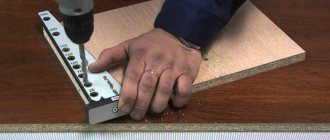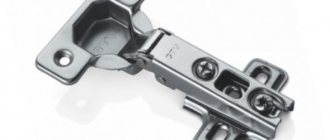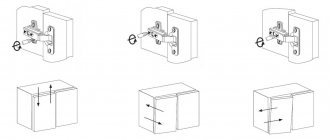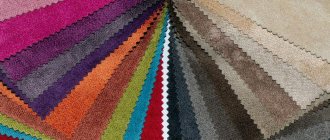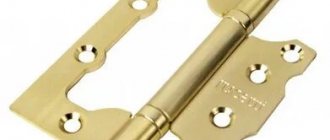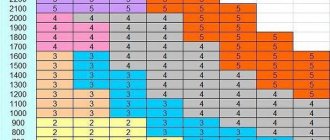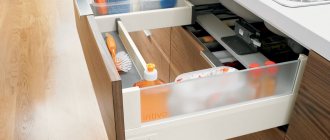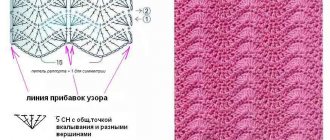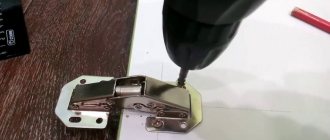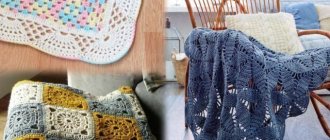When you start immersing yourself in making furniture with your own hands, there is a need to simplify your work with the same type of operations associated with the preliminary marking of parts for fasteners. Furniture drilling jigs are an excellent tool for the home craftsman. Many people prefer to make templates from blanks themselves. However, there are quite a few budget devices on sale on Aliexpress that are easier to buy than to reproduce. And they will last much longer, maintaining the original accurate calibration.
You can read about how to properly prepare sawn parts for further assembly in the article about adding and drilling chipboard with your own hands.
Furniture templates for installing handles
Any furniture handle has an installation base - the distance between the screws is subject to system 32. That is, it is a multiple of pitch 32, corresponds to the values 32, 64, 96, 128 mm, etc. When installing handles, it is important to maintain the same distance from the edges of the facade. Templates for drilling holes for handles can make marking easier. They can have different looks and shapes. The package may include drills.
Adjustment
Adjustment (or adjustment) is the final stage of installation of furniture hinges. It must be performed in several planes at once - vertically, horizontally, and in relation to depth:
- Adjusting the depth will help press the door closer to the body, or ease the pressure. You need to tighten the oval hole.
- On the vertical side - it will help to move the facade. This is done by twisting oval-shaped holes.
- On the horizontal side - ensures free movement of the door back and forth and back. The purpose of this adjustment is to avoid gaps between the cabinet and the door. The method is great for rooms with uneven floors or walls.
Now you know how to secure furniture hinges. As you can see, this is not so difficult to do. You don't need to have any special skills or abilities. Doing this kind of work with your own hands will be another reason for a little pride.
Furniture jigs for marking fasteners for guides for drawers
The fastening of any guides and pull-out systems also obeys the furniture “law”: the distance from the edge for fastening the first screw is 37 mm, and then the installation holes are located in increments of 32 mm at distances of 64, 128, etc.
Most manufacturers of components for drawers offer their own furniture jigs to facilitate marking for fasteners. However, you can also choose universal templates. Most often they consist of a set - left and right conductors.
Features of drawing up a drawing
You can make a template yourself if you have a drawing of the future design. To develop a sketch, you need to know what elements the template consists of.
Template structural details:
- Base. There are holes for drilling on it. This part of the furniture hinge installation template is key.
- Holder. The functions of an element include a limitation. The part is fixed to the door leaf, thereby eliminating shifts and deformations.
- Connecting parts. These elements help to adjust the template to specific door hinge sizes. The number of connecting elements depends on the complexity of the structure and the functions assigned to it. The primitive template has only 3 such details.
You can determine the amount of materials needed if you accurately determine the dimensions of the template. The design can be made more complex. You can add the installation of door locks to the functionality of the template.
Template for marking and drilling for confirmation
It will be useful for those who assemble furniture from laminated chipboard of any type and do pre-addition manually. The furniture jig is a ruler with holes for a 5-8mm drill for marking the front part of the parts (sidewalls) for confirmation with a countersink. The pitch can be set to even values from the edge (50, 70, 100mm) or in compliance with system 32.
Other types of loops
So, all types of loops can be classified in different ways. Thus, there are different types according to design, purpose, method of fixation and application. In general, there are several dozen types of furniture hinges, some are more common, some are less common, but almost all find application in various types of furniture designs. In addition to four-hinged hinges, let's look at a few more variations of hinges that may be encountered by furniture assemblers or people who have bought new interior items and decided to assemble them themselves.
Card loop
Card loops are considered the oldest. Their ancestor is a forged hinged hinge with a long overlay. Outwardly, they resemble an ordinary door hinge, only slightly smaller in size. The design consists of two metal strips connected in parallel using a thin rod that acts as a hinge. Nowadays they are rarely used, but are indispensable in the manufacture of retro-style furniture.
Butterfly door hinges
Pendulum type hinges or bar hinges make it possible to open the door 180 degrees. What happens is something similar to how the doors open at the entrance to a saloon in old westerns.
Bar loop
Mezzanine hinge structures are designed to attach horizontally oriented doors that will open upward. The hinges have a spring mechanism and also allow you to fix the door when open. They resemble ordinary overhead variations of loops.
Mezzanine hinge MK01
Ombre structures are used for so-called hinged doors. They will be mounted on both ends of the cabinet and do not require insertion, but may require minor milling (up to 2 mm). Then the sash can be opened 180 degrees. This is an ideal hinge for a folding table.
Hinge for folding elements
Secretory structures are similar to the card ones described above; they have an axial hinge and plates. They make it possible to open the façade downwards and keep it in a horizontal position. They can be accompanied by a special bracket that provides a supporting function. Usually installed in those cabinets where a bar is provided.
Secretory loops
Blind hinges, otherwise called adit hinges, are used for doors on the side of the cabinet that is adjacent to the wall. They can be used to attach the door to the false panel.
Gallery hinges
Heel products are extremely rarely used because they are designed only for lightweight doors. But they can be installed on facades with any type of opening. Installation is carried out in the lower and upper parts of the sash.
Heel loops for furniture
There are special hinges for glass sashes. They also come in different types, but their advantage is that they can withstand significant loads, and they look very beautiful.
Glass hinge
And relatively recently, hinges with 8 hinges, eight-hinged, appeared on sale. To install them, you do not need to resort to milling or cutting. This is an improved variation of the usual four-joint hinge. True, they are more difficult to install, and therefore, despite the absence of the need to carry out any preparation, such loops are rarely used.
8-joint hinge
Universal furniture jig for drilling
In terms of functionality, it combines the two previous devices, since it can adapt to marking with drills of different diameters, and the ruler allows you to set any desired distance from the edge and pitch. It is used both for drilling the front surface of parts and the end.
Well-known manufacturers of furniture jigs include Cheron, Kreg and Wolfcraft. Before choosing any model, we recommend comparing prices, quality and functionality with smaller manufacturers and suppliers of furniture components Blum, Hettich and others. Often the optimal price-quality ratio, and even with a guarantee, can be found where it seems that “everything is expensive.” Do not exclude this possibility for yourself and consider all possible options. After all, a furniture jig can serve faithfully for many years, helping to speed up production processes without losing the quality and accuracy of making furniture with your own hands.
Varieties
A furniture template can be of different types. Products differ in design method and functional features. Depending on this, jigs and templates for marking and drilling may fall into one of the following categories:
- invoices;
- rotary;
- tiltable;
- universal.
Overhead products are considered the best option for drilling holes in flat parts. They are suitable for chipboard and MDF boards. During operation, they are applied to the surface of the element on which a hole needs to be made, and held with hands so that they do not move. In other cases, the furniture template is placed in a specific place or fixed.
The rotating mechanism has a working surface that moves horizontally or vertically. The template allows you to make holes on parts whose axis is located at an angle. A rotary jig is used when you need to make a hole on elements that have a complex geometric shape.
Tiltable devices are needed to work with parts located in different planes. Universal products allow them to be reconfigured for the production and assembly of furniture of various types. They are used mainly in small workshops that produce cabinets, tables, chests of drawers in small batches.
Depending on the type of fixation of the device on the surface of the parts, the furniture template is divided into sliding and fixed. Sliding ones lie freely on the surface of the parts, allowing you to make each hole separately. Such devices are considered less convenient. Dockable templates are more convenient to use, although they limit the actions of the wizard.
Almost all types of devices have a fairly simple design, so they can be made independently at home. This will save money.
Overhead
Sliding
Angular
Universal
